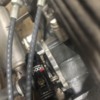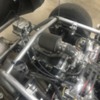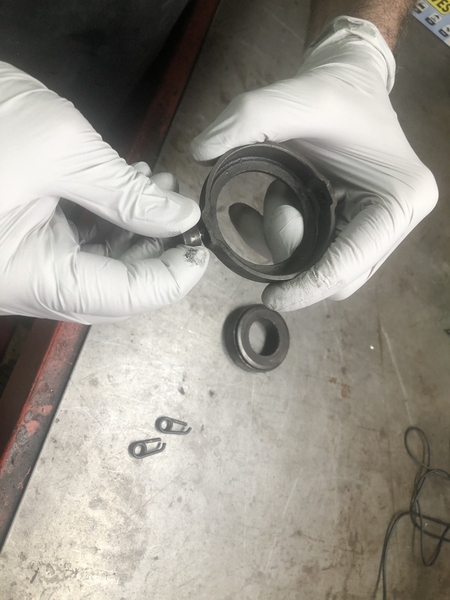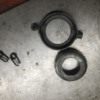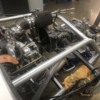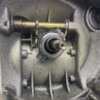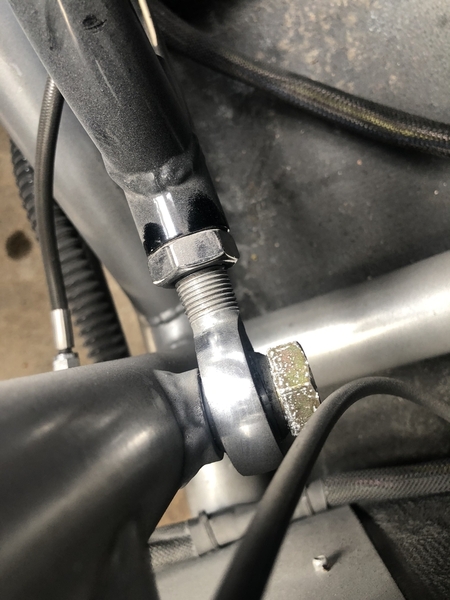I was driving the Spyder yesterday and the clutch failed. At the beginning I thought it could be due to the master slave cylinder or the clutch cable. The master cylinder seems to be engaging with the right range of motion the external clutch lever. Do you think it could be an issue with the thrust bearing ? If it is what is the easiest way to disassemble the clutch assembly ? ( I have a seduction Spyder with the Subaru engine )
Replies sorted oldest to newest
I would check to make sure the clutch cable just didn't come off of the wing nut end of line first. Sometimes a few strands will break allowing you to operate the clutch with some resistance but not enough travel to shift gears. Otherwise removing the engine to check the transmission really isn't all that difficult. But check with @DannyP since he has a Spyder and can get his motor out faster than most.
i once had the clutch lever(the thing U attach the clutch cable to) bend towards front of car enough so clutch wouldnt engage,,guessing metal fatigue..
Robert, the Vintage Spyder has a hydraulic clutch. The master cylinder is a 5/8" Wilwood and the slave is a 7/8" Wilwood also. But I'm not sure at all what Daniel would have used.
If the slave is moving enough to disengage the clutch, then it's either the cross shaft(sometimes the welds break on the throwout bearing arms) or the throwout bearing itself went bad or the clutch fingers are bent.
Unfortunately, the only way to diagnose any of this is to pull the motor.
Pulling the motor is nowhere as easy as on a Speedster. I have the tools and have done it plenty, but it's still not easy.
@Robert M posted:I would check to make sure the clutch cable just didn't come off of the wing nut end of line first. Sometimes a few strands will break allowing you to operate the clutch with some resistance but not enough travel to shift gears. Otherwise removing the engine to check the transmission really isn't all that difficult. But check with @DannyP since he has a Spyder and can get his motor out faster than most.
Never mind. Lol
@DannyP posted:Robert, the Vintage Spyder has a hydraulic clutch. The master cylinder is a 5/8" Wilwood and the slave is a 7/8" Wilwood also. But I'm not sure at all what Daniel would have used.
If the slave is moving enough to disengage the clutch, then it's either the cross shaft(sometimes the welds break on the throwout bearing arms) or the throwout bearing itself went bad or the clutch fingers are bent.
Unfortunately, the only way to diagnose any of this is to pull the motor.
Pulling the motor is nowhere as easy as on a Speedster. I have the tools and have done it plenty, but it's still not easy.
It uses a Wilwood slave. It is moving enough to disengage the clutch unfortunately is not releasing. The clutch components are Kennedy Engineering Products. What is the best way to look at the clutch, dropping the engine or removing the gear box from the back? If you have some recommendations please let me know.
Attachments
I'm not 100% familiar with taking things apart with a Subaru engine. It appears there are mounts welded to the middle crossmember by the bellhousing that support the engine.
It's going to be a matter of removing the engine though. The engine drops down, so you'll need some high and solid jackstands or a lift. Then you'll need a cherry picker(with clamshell removed) or a transmission jack to lower the motor.
First, remove the exhaust. Then all your hoses, lines, and engine harness. Don't forget the accelerator cable. I also remove the shift cables from the trans and arc them up over the firewall and into the cockpit.
I've never gotten the motor out of my Vintage through the top. IMHO, it has to be lowered. If you can't get it to clear the trans input shaft, you can remove the mount by the tailcone of the transmission and push the trans down some, once the engine is slid forward and there is NO weight on the trans.
If you end up pulling the transmission for any reason later you need to pull the hubs and brakes off the axles, and remove the shocks so you can slide the trans to one side and get the axle up and over the frame, then to the other side for the other axle.
Good luck. It is helpful to have two extra people to remove the clamshell and at least one to remove the engine.
I'd give Vintage a call and ask the best way. He builds a LOT of Subaru-powered cars.
In a Beck you can pull the trans off the engine on a Subaru build, leaving the engine in place and the cooling system intact, and making for an easy clutch service/change/etc... You have very similar room in a Vintage, so it may be worth a shot (or just ask Greg). As for your issue, if you have a Kennedy (KEP) pressure plate I'd be willing to bet it's pulled slop into the rivets and the pressure plate is not engaging evenly. KEP still makes some good parts that I use regularly, but pressure plates are not one of them. If that is the case, swap it to a Sachs HD and continue on...
@chines1 posted:In a Beck you can pull the trans off the engine on a Subaru build, leaving the engine in place and the cooling system intact, and making for an easy clutch service/change/etc... You have very similar room in a Vintage, so it may be worth a shot (or just ask Greg). As for your issue, if you have a Kennedy (KEP) pressure plate I'd be willing to bet it's pulled slop into the rivets and the pressure plate is not engaging evenly. KEP still makes some good parts that I use regularly, but pressure plates are not one of them. If that is the case, swap it to a Sachs HD and continue on...
Do you have part numbers for the Sachs pressure plate. I may as well replace the clutch parts that could create future problems.
I had that same failure early last year. It made a mess inside the bellhousing. A new clutch and pressure plate is a good idea.
Clutch, pressure plate, T/O bearing, and alignment tool from Amazon: $142, free delivery. Click the blue font-- it's a link.
I'd get a solid center disc. I've put 45k on solid discs. I only replaced it since the motor was out.
I'm glad you can pull the trans back on a Suby car, either Beck or Vintage. No such luxury on a type1 powered car.
@GO550 there are both early (collar) and late (no collar) pressure plates that correlate to having an input sleeve around the input shaft of the gearbox or not. Late model with the input shaft sleeve on the gearbox and no collar on the pressure plate is the preferred set-up, but you have to match what you have to your gearbox.
@GO550 Sorry, just saw your photos and you have the early trans and the early throw-out with removable clips (late model have the clips integrated into the bearing housing) so you'll need the early model HD pressure plate. EMPI is a distributor for Sachs and their part number is 32-1235-B Factory part number is 311-141-025EBR I only assume their is a different part number for stock vs. HD but be sure to double check it is HD.
One other small tip is once the throw out is installed put a SMALL dab of high temp silicone on the springs where they insert into the side of the throw out bearing casing. The aftermarket springs aren't shaped as much as the old German OE ones and on occasion can get spit out causing TO bearing failure. A small dab of silicone helps keep them in place.
Mr. Hines, going the extra mile, again.
They're a tiny bit more difficult to install, but I use the Weddle HD spring clips and they don't come out.
@chines1 posted:
EVERY. BIT. OF. THAT!
I get about 90% or more of my trans stuff from them. If there is a non-Chinese option, they usually have it. Not too much German is available these days, but the Brazil stuff isn't too bad.
Attachments
Thank you for all your recommendations
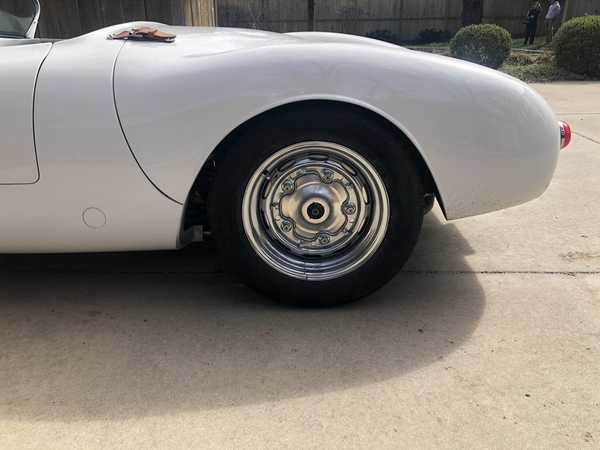
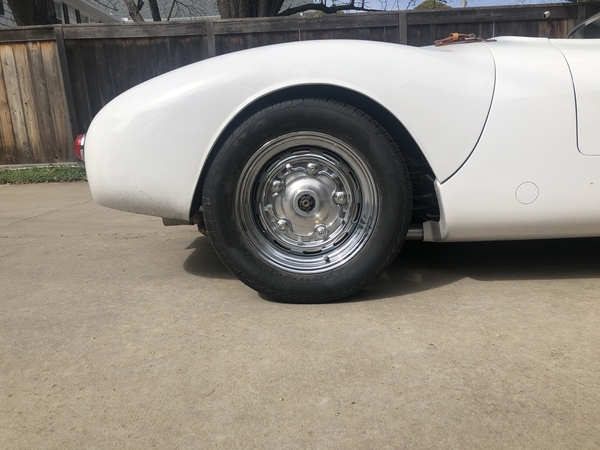
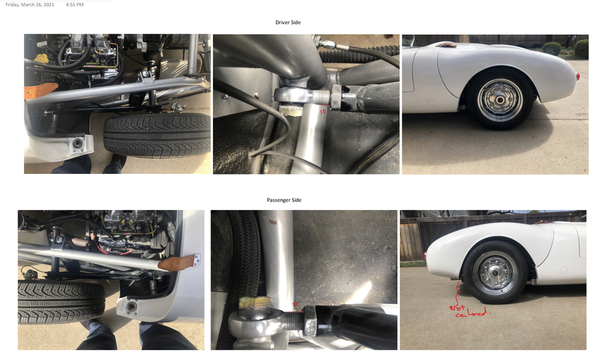 The clutch was fixed but I have noticed that when the mechanic assembled the rear axel there is an offset on the passenger side rear wheel. See the pictures attached, in theory nothing was changed with the suspension settings, I have noticed on the passenger side more rotation on the ball joint (see middle picture). Anyone knows what could be the issue? Is it an issue with the suspension components or when he attached the rear clamshell it was misaligned?
The clutch was fixed but I have noticed that when the mechanic assembled the rear axel there is an offset on the passenger side rear wheel. See the pictures attached, in theory nothing was changed with the suspension settings, I have noticed on the passenger side more rotation on the ball joint (see middle picture). Anyone knows what could be the issue? Is it an issue with the suspension components or when he attached the rear clamshell it was misaligned?
Attachments
I’m not a Spyder guy, but in the photo of the passenger side the clamshell is not lined up right. It appears to be sitting about 3/4”-1” farther forward than the driver’s side. Get that sorted out and I think your problem will be fixed.
I do have a Spyder, and I agree with Gordon. That's where I'd start.
How does the clamshell gap look from above, left to right?
If your rear clam is on right (or even if it's not) have a shop align the car, or do it yourself.
The rear swing axles need to be set up near perpendicular to the car's centerline so that each wheel can be set up near parallel to themselves and to the front wheels.
You want a little bit of toe-in back there--like a 16th or maybe an eighth inch. Camber and caster are not adjustable.
On my car there are slotted holes in the spring plate for the bolts that fix the rear hubs. Vintage has a different system to work with the coil-overs—i.e. those big Heim joints—but the concept is the same. Plenty of cars leave their builders without this being done right.
I had mine wrong on first try and the result was noticeable in the wheel arches like yours.

See it? Too far forward, just by a little. The car felt fine but it was "crabbing" down the road.
Much better now.
Since this is a Vintage Spyder finished by DV/Seduction, it is identical to the car I have. I do all my own alignment work. The only thing I don't do on the car is mount tires and do my yearly state inspection.
There doesn't appear to be anything wrong with the clamshell fitment at all. These bodies are close, but not 100% symmetrical anyway. All measurements should be off of hard points on the suspension/frame. At home, you can mark hard points with a plumb bob on the floor, then move the car out of the way and measure diagonally as well as left/right and forward/back.
You should also measure the length of the trailing arms from the center of the axle to the center of the heim joint. They should be close to the same if not exactly the same.
Loosen ALL the motor and trans mount bolts to the chassis. Pry the motor backward on the passenger side, jostle it a bit and see if it moves/settles. Then re-tighten. I'm not aware of how the Subaru motor mount works. If that does it great.
If not, you need to measure from the front hub centers to the rear hub centers on each side to verify IDENTICAL wheelbase. This is what Ed found out on his car, and WILL make the car crab down the road. I use 1/16" total toe-in in the rear, but straighten out the wheelbase first. You can set the toe-in with a friend and a tape measure.
And you CAN set the camber in the rear(which you do first before toe-in) by adjusting the ride height. Mine rides/handles/looks right at about 3 to 3.5 degrees negative camber.
It looks like there are a LOT of exposed threads on that right side trailing arm. From my memory, when you shorten the trailing arm the wheelbase changes about 33-50% MORE than you adjust. So if you needed 3/8 inch on the wheelbase, the trailing arm only needs about a 1/4 inch adjustment. Anyway, the smallest adjustment is a half-turn of the heim joint. So that would be half of whatever pitch the threads are.
You can easily loosen the jam nut and rotate the heim joint and hold it in place with a Crescent wrench while you tighten the jam nut.
Camber and toe-in are all you have to adjust. The beam is welded in the front so no caster adjustment. The rear has no caster either.
The number of threads exposed means nothing, the total length(axle to pivot) is what matters.
A computer setup isn't needed, you need a toe gauge(tape measure) and a camber gauge(which could be a construction square and a tape measure) and a flat floor. You could also use a 2 foot straight edge and a cheap digital angle gauge.
Get the book "How to Make Your Car Handle".
Thank you Danny, I will follow your recommendations



